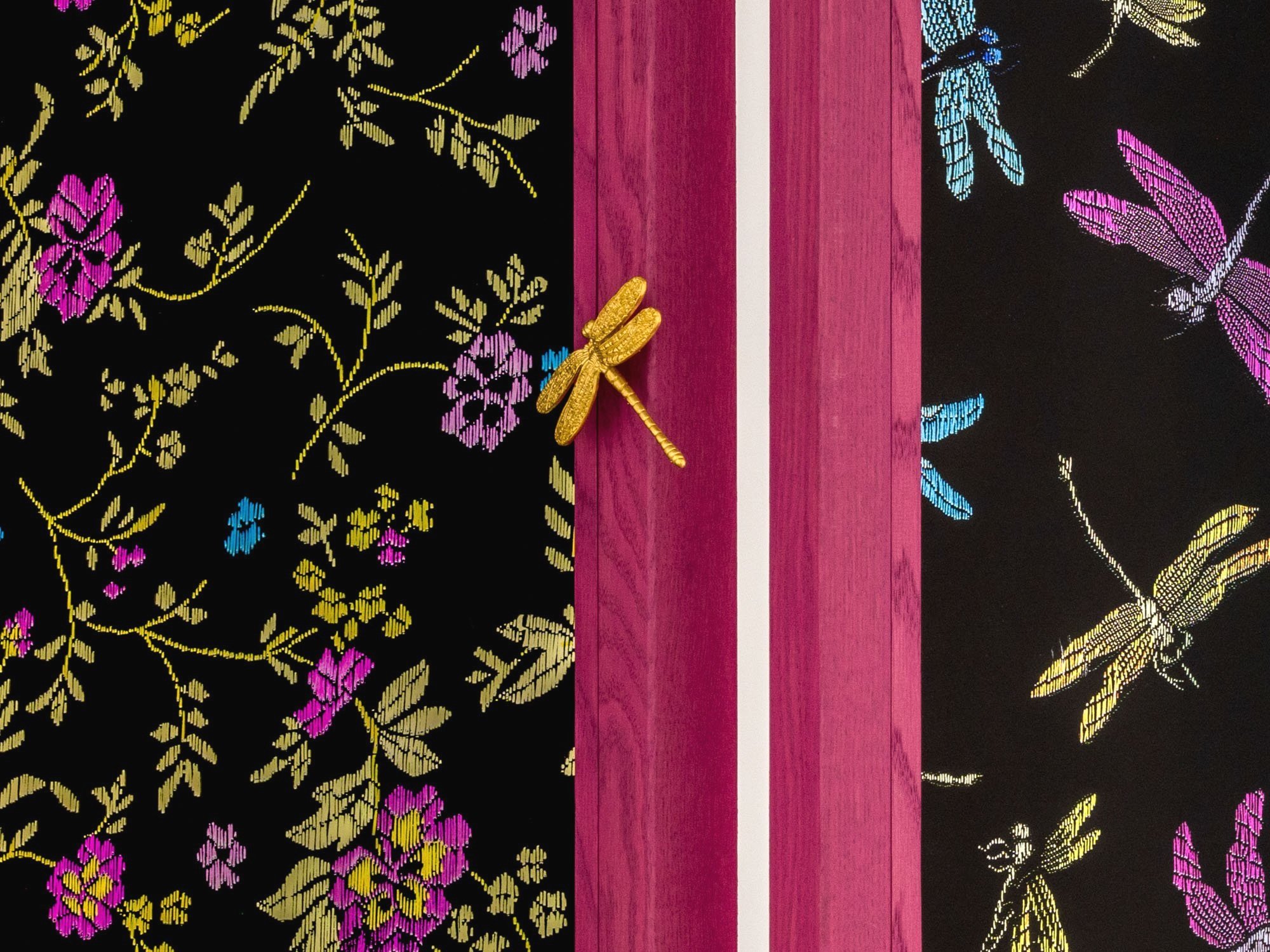You said we’d meet again if fate willed it, 2023
Stained white oak, photo transparencies, brass
92 x 79 x 3”
You said we’d meet again if fate willed it is a four-panel folding screen with photo transparencies of brocade silk adorned with butterfly, dragonfly, and floral patterns. The sculpture incorporates styles from Chinese décor and craft while experimenting with how these designs could look with contemporary materials. Photos replace panels that are typically embroidery or wood, and colour schemes are saturated with shades familiar to contemporary feminine material culture.
The work takes influence from the tragic leading women of Stanley Kwan, Hou Hsiao-hsie, Ang Lee, and Wong Kar Wai‘s atmospheric films. Set between the 1880s and 1960s in Shanghai and Hong Kong, these characters grappled with the various social expectations for women that morphed alongside war, politics, and modernization as they looked for ways to pursue love and seek independence. Many of these characters wear qipaos with distinctive patterns and have names that reference flowers. The patterns they wear provide a window for their emotions and wishes when contrasted against their domestic settings.
In Kwan’s Rouge, Fleur’s desire for the freedom to be with whom she loves is mirrored through patterns of butterflies and dragonflies flying in all directions. Fleur’s immobility due to her social standing is stressed in extended scenes where she applies her makeup against wallpapers with rigid repeating flowers. In Kwan’s Centre Stage, Ruan Lingyu shines on set as a silent movie star in her distinctive outfits, but when her private life comes into public scrutiny, she fades into the intricate walls of her home, seemingly wishing to disappear. The title of the piece comes from Kwan’s Fleur, when she is revealed as a ghost, searching for answers to her former life in an ethereal state of being both absent and present. By creating an object where viewers engage between foreground and background, this piece parallels the flux of an ontological existence of being visible/invisible, object/subject, and interiority/performance.
Installation photos by Darren Rigo.
Fabricated by Véronique Sunatori.





